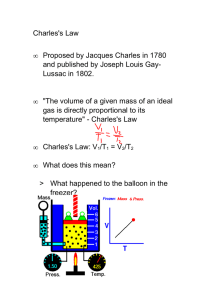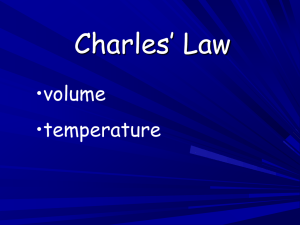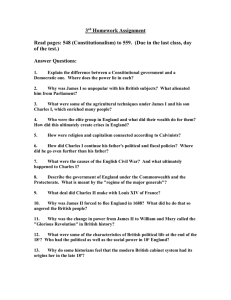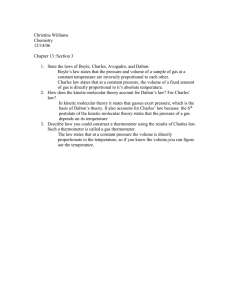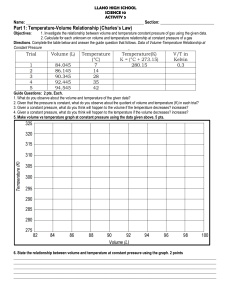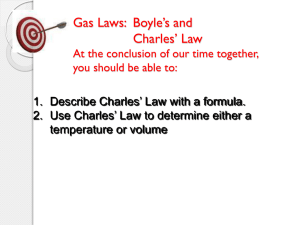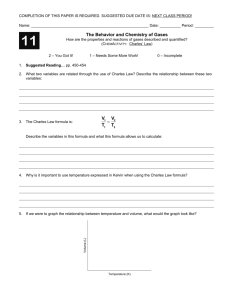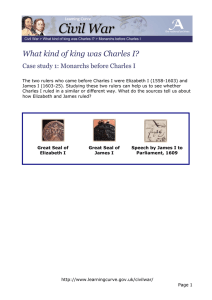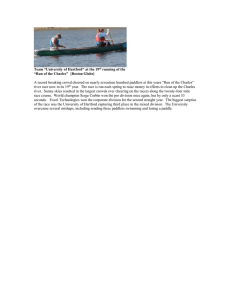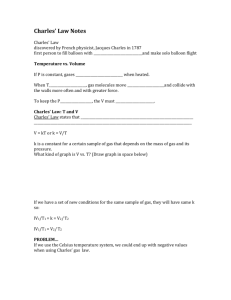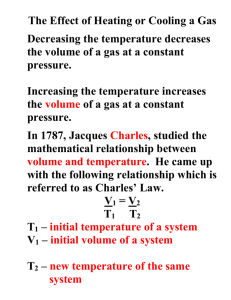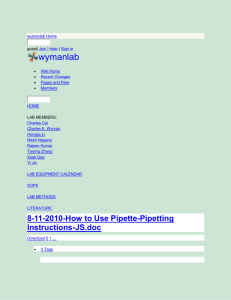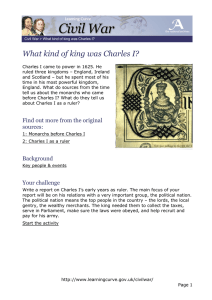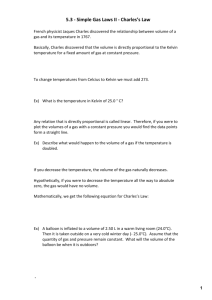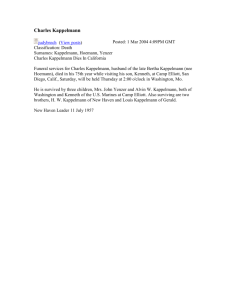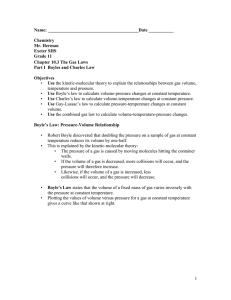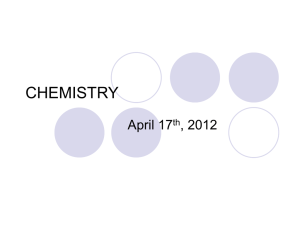Absolute Zero In the late 1700s Jacques Charles showed that for a
advertisement
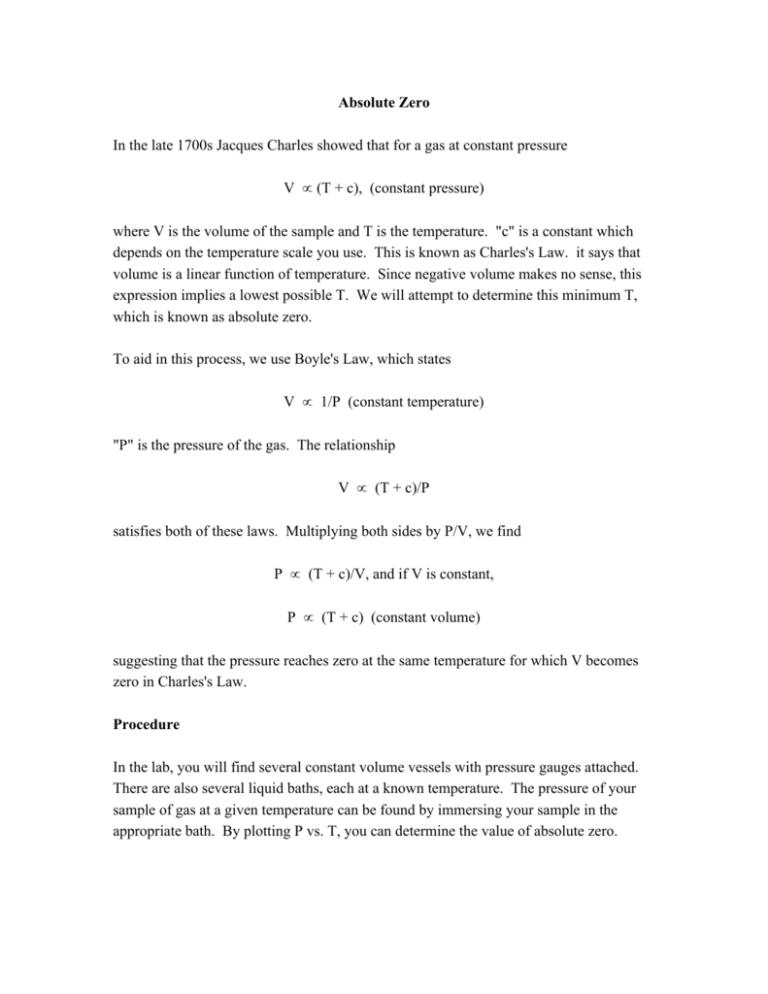
Absolute Zero In the late 1700s Jacques Charles showed that for a gas at constant pressure V ∝ (T + c), (constant pressure) where V is the volume of the sample and T is the temperature. "c" is a constant which depends on the temperature scale you use. This is known as Charles's Law. it says that volume is a linear function of temperature. Since negative volume makes no sense, this expression implies a lowest possible T. We will attempt to determine this minimum T, which is known as absolute zero. To aid in this process, we use Boyle's Law, which states V ∝ 1/P (constant temperature) "P" is the pressure of the gas. The relationship V ∝ (T + c)/P satisfies both of these laws. Multiplying both sides by P/V, we find P ∝ (T + c)/V, and if V is constant, P ∝ (T + c) (constant volume) suggesting that the pressure reaches zero at the same temperature for which V becomes zero in Charles's Law. Procedure In the lab, you will find several constant volume vessels with pressure gauges attached. There are also several liquid baths, each at a known temperature. The pressure of your sample of gas at a given temperature can be found by immersing your sample in the appropriate bath. By plotting P vs. T, you can determine the value of absolute zero. Should results depend on the amount or type of gas in your vessel? There are vessels with varying amounts and types of gas available in the lab. Test for these effects. What effect should the gas in the neck have? (should it make your result too high or too low? Why?) How accurate can you expect your result to be, based on an analysis of your procedure?



